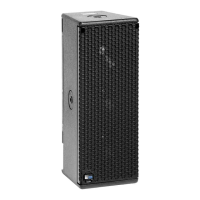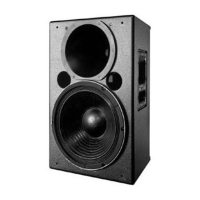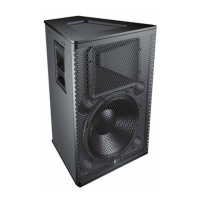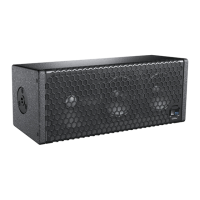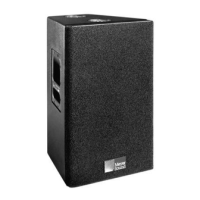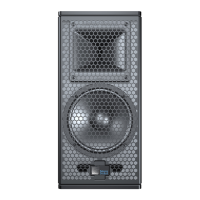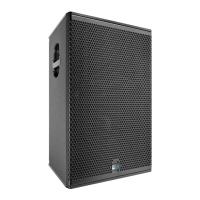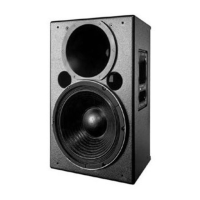
Do you have a question about the Meyer Sound UPM-2P and is the answer not in the manual?
| Input Impedance | 10 kΩ |
|---|---|
| Impedance | 8 Ω |
| Type | Ultra-Compact Wide Coverage Loudspeaker |
| Power Handling | N/A (Self-Powered) |
| Drivers | 2 x 5" woofers, 1 x 1" tweeter |
| Coverage Angle | 100° x 100° |
| Dimensions | 216 mm |
| Input Type | Balanced XLR |
| Enclosure Material | Birch plywood |
| Mounting Options | Pole mount |
Explains how to use the manual and its icons for understanding.
Introduces the UPM-1P and UPM-2P loudspeakers and their key features.
Discusses the advanced amplification and control circuitry for superior performance.
Explains the three-way system design and its benefits for frequency response.
Describes various applications for the UPM-1P and UPM-2P loudspeakers.
Covers AC power input, connectors, and daisy-chaining for UPM loudspeakers.
Explains how to select the correct voltage for the unit to prevent damage.
Details the current draw and ratings for safe and proper operation.
Provides essential guidance on AC power connector wiring and safety.
Highlights critical electrical and safety considerations for safe use.
Describes the balanced XLR audio input and loop connectors.
Details the available interchangeable audio input modules for different applications.
Explains the standard looping audio input module and its connections.
Describes the module with polarity switch and level attenuator for tuning.
Explains the amplifier's function, limiting, and indicator LEDs.
Details how the internal drivers are connected to the amplifier.
Explains the user panel components and their functions for system monitoring.
Describes the function of the red Service LED indicating network status.
Explains the function of the Service button for system identification.
Describes the function of the green Wink LED for ID signaling.
Explains the function of the Reset button for firmware reboot.
Describes the function of the green Activity LED for system status.
Describes the graphical user interface of the RMS monitoring software.
Explains daisy-chaining UPM loudspeakers and subwoofers for system setup.
Details using a line driver for signal distribution and gain adjustment.
Discusses using lo-cut filters with DSPs for flat frequency response.
Explains the use of external DSPs and their careful application.
Introduces the MAPP Online acoustical prediction program for system design.
Introduces the SIM audio analyzer for system measurement and analysis.
Explains the SIM audio analyzer's measurement technique for accuracy.
Lists various applications for the SIM audio analyzer in acoustics.
Describes the MYA-UPM yoke for suspending loudspeakers.
Explains how to mount UPM loudspeakers on stands using adapters.
Details the MUB-UPM U-bracket for versatile loudspeaker mounting.
Describes wall mounting options, vertical and horizontal, using the U-bracket.
Describes ceiling mounting options using the MUB-UPM U-bracket.
Describes floor mounting options using the MUB-UPM U-bracket.
Troubleshooting steps for no power and no audio output.
Troubleshooting steps for no sound when the On/Temp LED is green.
Troubleshooting steps for hum or noise produced by the loudspeaker.
Troubleshooting distorted audio when the Limit LED is not illuminated.
Troubleshooting highly compressed audio when the Limit LED is constantly yellow.
Troubleshooting red On/Temp LED indicating amplifier overheating.
Troubleshooting issues where only high or low drivers produce sound.
Detailed acoustical specifications for the UPM-1P model.
Detailed acoustical specifications for the UPM-2P model.
Details on the low and high frequency transducers used in the loudspeakers.
Technical details and specifications of the audio input circuitry.
Technical details and specifications of the internal amplifiers.
Technical details of AC power requirements, connectors, and safety.
Detailed current draw specifications for different operating voltages.
Physical dimensions, weight, and enclosure details of the loudspeakers.


